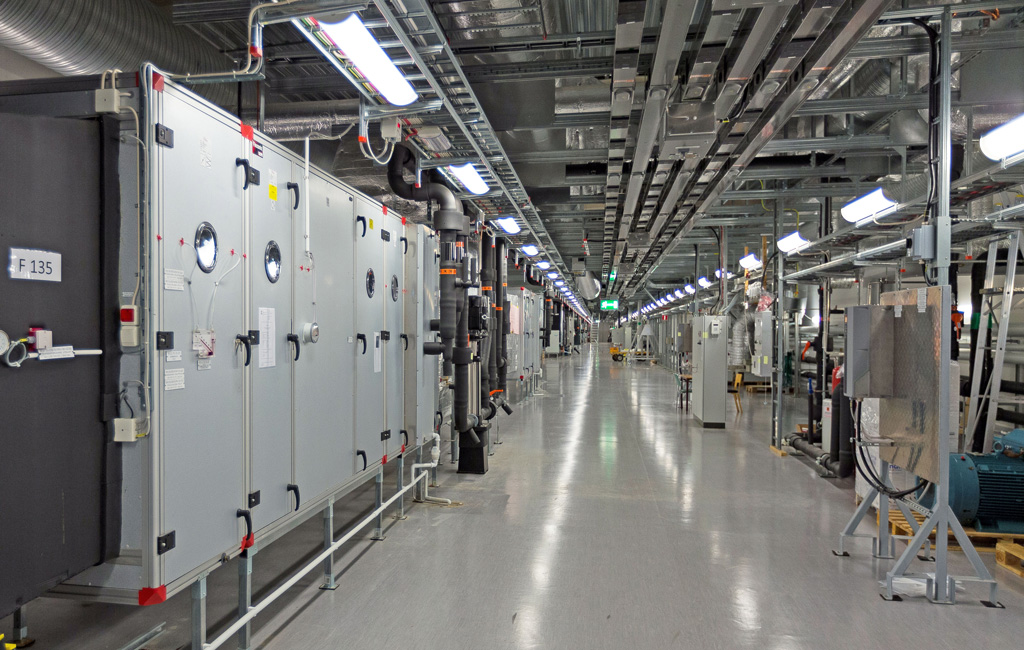Over 1,000 employees and five buildings with a total area of around 50,000 square meters – the Kemicentrum in Lund, Sweden is an architectural heavyweight. Built in the 1960s, it presented major challenges to its owner, the Akademiska Hus real estate company, when it came to efficiency. “We want to halve the quantity of energy that we purchase by 2025,” said Caroline Warnicke, the Energy team leader at Akademiska Hus. The strategy had two parts. On the one hand, newly planned buildings and ones that were still to be built had to be revised to include energy optimization. On the other hand, existing buildings were to be optimized. The chemistry center in Lund fell into the second category.
Focus on safety and savings
Since 2010, renovation work has been continually done on the buildings in the complex. In November 2015, it was time to renew the ventilation system. The special focus was Building 1 in the complex, which housed research and teaching rooms for chemical engineering, material chemistry, and basic education in chemistry on around 15,000 square meters. The place at which two AC fans connected in parallel did their job was where the requirements for suitable ventilation and air conditioning were the most stringent. After all, people use chemical in the laboratories and the vapors they set free have to be extracted from the ventilation system. The focus was the safety of the people who work there. “That was why we urgently needed redundancy in Building 1,” recounted Ingvar Artiles, the facility engineer for Akademiska Hus who headed the project in Lund. “The old system was simply unable to do the job.”
Out with the old, in with the new
A FanGrid was the solution. For several years, this layout has been the means of choice in Sweden for cases like that of Kemicentrum Lund. Instead of relying on a few large fans, in a FanGrid the load is distributed among several smaller fans. “If a fan in a FanGrid fails, we can easily compensate for it by temporarily increasing the speed of the others,” said Jan Sörensen, sales engineer at ebm-papst in Hässleholm. When it comes to FanGrids, ebm-papst is a pioneer in Sweden and was also the first point of contact for Kemicentrum.
The FanGrids transport up to 26 cubic meters of air per second.
In summer 2016, Ingvar Artiles and his colleagues replaced the old system with the new FanGrids. Two FanGrids with nine RadiPac fans each were installed and two others contain six fans each. The larger FanGrids transport a maximum of 26 cubic meters of air per second and the smaller ones manage 17 cubic meters per second.
One more step towards sustainability
The EC motors in the fans deliver higher efficiency, while a FlowGrid inlet grill reduces the noise level. “The collaboration with Akademiska Hus was challenging yet fun,” said Jan Sörensen from ebm-papst in conclusion. And Akademiska Hus was another step closer to its ambitious sustainability targets: After two years of operation, the retrofit has already brought energy savings of around three quarters of the original consumption.




Leave a comment